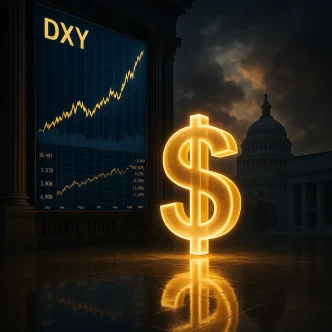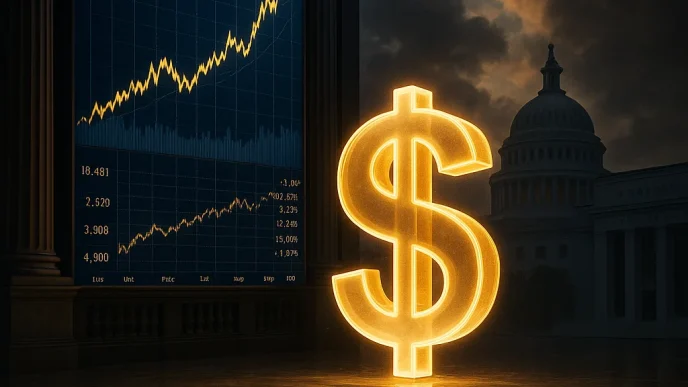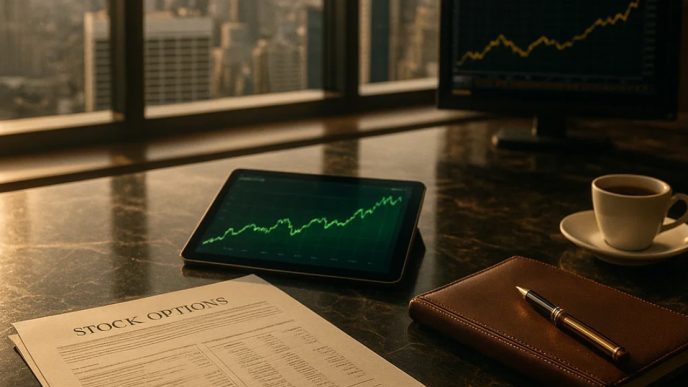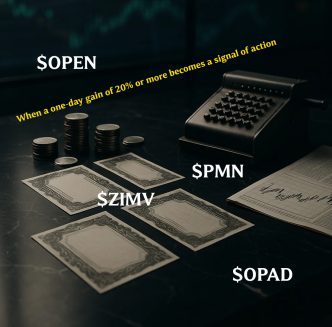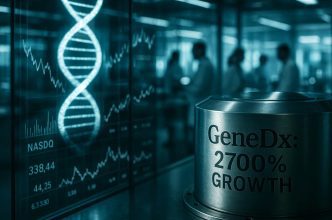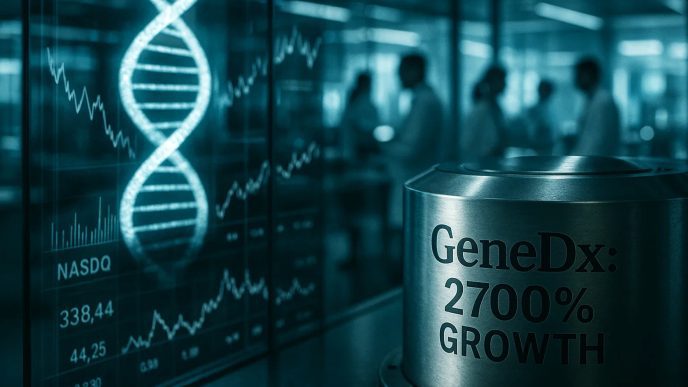What does the yield on 10-year government bonds in 2025 tell investors?
The yield on 10-year U.S. Treasury bonds has long been an integral part of the agenda on Wall Street. For some, it’s an indicator of the health of the economy; for others, it’s a benchmark for years to come. But what really makes it so significant is its role as a barometer of investor confidence in the future.
At times when markets are nervous, the yield on the 10-year Treasury bond drops precipitously: money seeking safe harbor. When the opposite is true – euphoria and confidence in growth – it rises, signaling high expectations and a thirst for yield. And that makes sense: after all, it’s the 10-year U.S. bond that is the underlying asset on which mortgages, corporate borrowing and even stock valuations on the tech-heavy Nasdaq focus.
Figures that speak louder than commentary
Current yields and momentum
As of mid-2025, the 10-year Treasury bond yield has settled in the neighborhood of 4.10-4.25% per annum. This is appreciably above levels of recent years. This rise is a reflection of multiple factors: contained inflation, the Fed’s cautious tone, and rising expectations for future rates. Within this range, the market is essentially “bargaining” with the economy – each basis point is essentially a vote for a near-term future scenario.
Historical levels and comparisons
To get a sense of the magnitude of the changes, just look back to 2020: during the covid shock, the yield on 10-year Treasuries dipped below 0.6%. Back then, investors were literally hiding in Treasuries. Now the situation is different – fears have been replaced by expectations, but there is no less uncertainty. Each percentage jump causes a wave of revision of strategies from London to Singapore.
Treasuries yields and the stock market
Impact on the stock market
Perhaps no other instrument has as direct an impact on stocks as the 10-year Treasury yield. When it rises-especially sharply-investors reassess the value of companies’ future earnings. This is especially painful for the technology sector, where valuations are based on multi-year expectations. Rising yields increase the discounting of those future flows, reducing the attractiveness of high-growth but unprofitable companies. Investors begin to shift into more stable assets with short-term gains or simply go into cash.
An additional pressure factor is the reassessment of the cost of borrowing for businesses: the higher the rate, the more expensive the capital. For companies with high debt levels, this can be critical. The multiples by which investors value stocks – from P/E to EV/EBITDA – are also adjusting. In other words, high Treasuries yields make the market more demanding on the quality and transparency of earnings.
Signals for investors
Conversely, a decline in 10-year Treasury yields is often accompanied by a rise in stocks, at least in the short term. But it’s important to realize: if yields are falling not because of optimism but because of recession fears, that’s a red flag. In recent quarters, with rising geopolitical risks and shaky consumer activity, more and more hedge funds and institutional players have been partially exiting equities in favor of Treasuries.
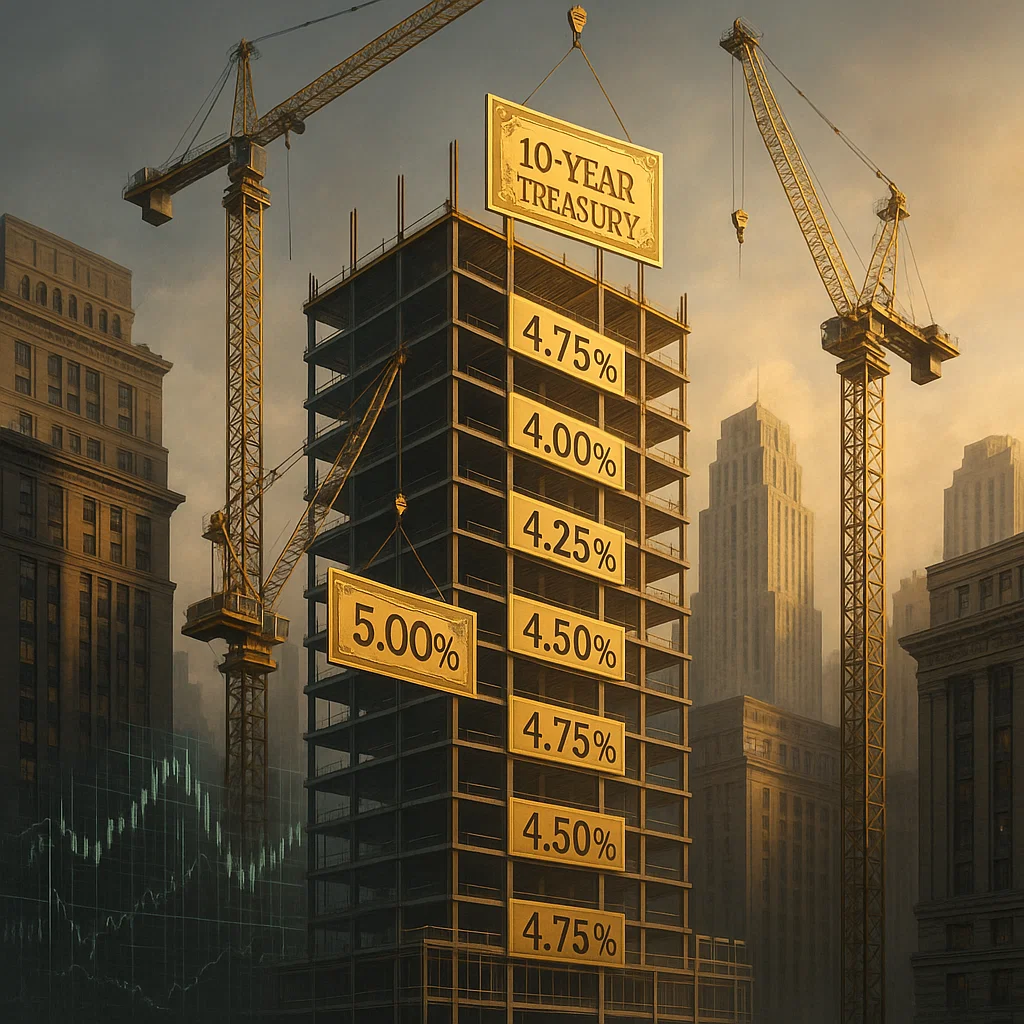

Why 10 years: the structure of the yield curve
The logic behind the choice of duration
The 10-year maturity is not a random choice. It serves as a kind of “golden mean” for assessing expectations: long enough to account for future risks, but not so long as to lose sensitivity. It is the yield on the 10-year Treasury bond that sets the yield curve – the shape of which the market reads like an experienced sailor reads storm clouds.
Signals from curve inversion
When short-term rates are higher than long-term rates – the curve becomes inverted. This is one of the most accurate harbingers of a recession. Over the past 40 years, such inversions have preceded almost all serious economic downturns. In 2023, the inversion lasted a record long time – and now, as the curve begins to flatten, the market is frozen in anticipation: is this a recovery or the calm before a new wave?
What an investor should consider
Practice and application scenarios
For those looking for stability and predictability – 10-year Treasuries offer a safe harbor. Especially if their yields exceed inflation. For balanced portfolios, they are a reliable anchor that stabilizes results even in turbulent times. Bonds allow investors to manage duration, adjusting to the changing macroeconomic backdrop, and provide a way to reduce portfolio volatility without losing liquidity.
On the practical side, they can be used to form a bond ladder, lock in a rate for the long term, or even hedge risk in other assets. Some investors resort to strategic spread trading – for example, using the yield differential between 10-year and 2-year securities. Others – using futures and options on Treasuries to fine-tune their market expectations. In an institutional setting, 10-year bond yields also act as a benchmark for ALM (asset and liability management) modeling.
Fluctuations in 10-year Treasury bond yields become a catalyst for spillovers between assets. For example, the recent jump from 3.9% to 4.3% in just two weeks triggered a 6% correction in growth stocks. ESG investors in this environment are increasingly looking toward stable debt securities – from TIPS to green bonds.
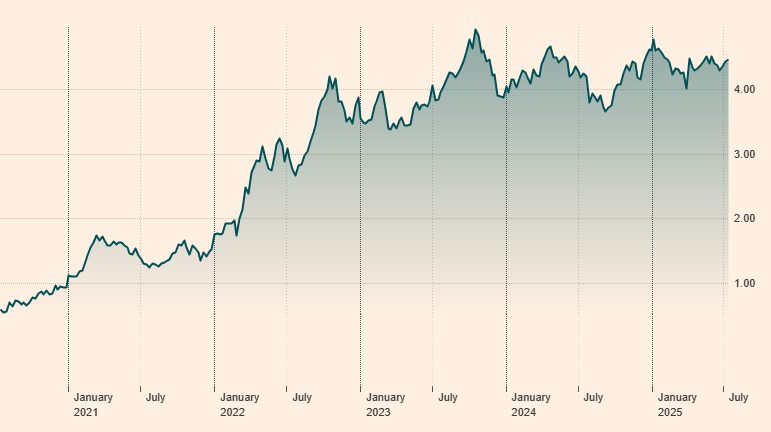

Investing in biotechnology is not only a bet on the medicine of the future, but also on technologies that will transform healthcare, extend life, and change the approach to treatment. Such diversification can complement a balanced portfolio, providing both stability and the potential for high-yield investments.
Who is influencing the Treasuries market
Key participants and events
The yield on 10-year Treasury bonds is formed not only by the Fed. Its real value is “drawn” daily by dozens of factors:
- Funds with trillion-dollar portfolios reacting to macro data and geopolitics;
- foreign governments reshaping their currency reserves;
- reports like CPI or Non-Farm Payrolls that change expectations in minutes;
- statements and hints from Fed officials that can move the market 30-40 points in a day.
An example? Remember how in 2019, Powell triggered a short-term rally in Treasuries and a correction in equities with just one comment.
The best dividend stocks of 2025: where reliable income meets high demand
Yields and the future
Forecasts and possible scenarios
Analysts at major banks – from Goldman to Morgan Stanley – are divided in their forecasts today. Some bet on 10-year Treasury yields falling below 3.8% by the end of 2025, while others expect a return to 4.5% amid the Fed’s tightening.
The 10-year Treasury yield reflects not only macro numbers, but also global sentiment. It is an indicator of confidence in the economy, in regulators and even in the international order. To ignore it is to walk through the market blindfolded.
The Final Look
Ten-year returns are not just a dry metric. It’s a mirror of confidence, fears and hopes. In 2025, the 10-year Treasury bond yield is once again the benchmark. For an investor who wants to not just preserve capital, but understand where the market is headed, this is a must-have benchmark. A good portfolio is not just about stocks and innovation. It’s also about understanding what’s happening in the underlying segments. And Treasury bonds are just one of those. They are silent, but they say a lot. From a practical point of view, in the current macroeconomic context, ten-year bonds are becoming an integral part of a diversified portfolio. Their attractiveness increases with high interest rates and lower market volatility. At the same time, the yield on 10-year Treasury bonds can serve as a benchmark for assessing the risk of other assets, as well as a tool for managing the duration in the portfolio.
For those building a strategy with a 5-10 year horizon, current yield levels offer an entry point with a reasonable balance of risk and return. And for shorter-term investors, it is an opportunity to lock in profits during periods of uncertainty in the stock market. The key is not to view bonds as a passive element, but to analyze their role in the context of the global cycle. It is the yield on 10-year Treasury bonds that today gives some of the clearest signals – from economic slowdown to risk reassessment. To ignore these signals is to miss the key to managing capital in a changing world.
While traditional instruments such as 10-year Treasury bonds remain the foundation of investment strategies, more and more investors are turning their attention to biotechnology as a driver of growth in the coming years. This industry combines groundbreaking scientific discoveries, high margins, and the potential for exponential growth. Unlike fixed-income bonds, the biotechnology sector has the potential to deliver multiple capital gains in the event of successful clinical trials or FDA approval.



